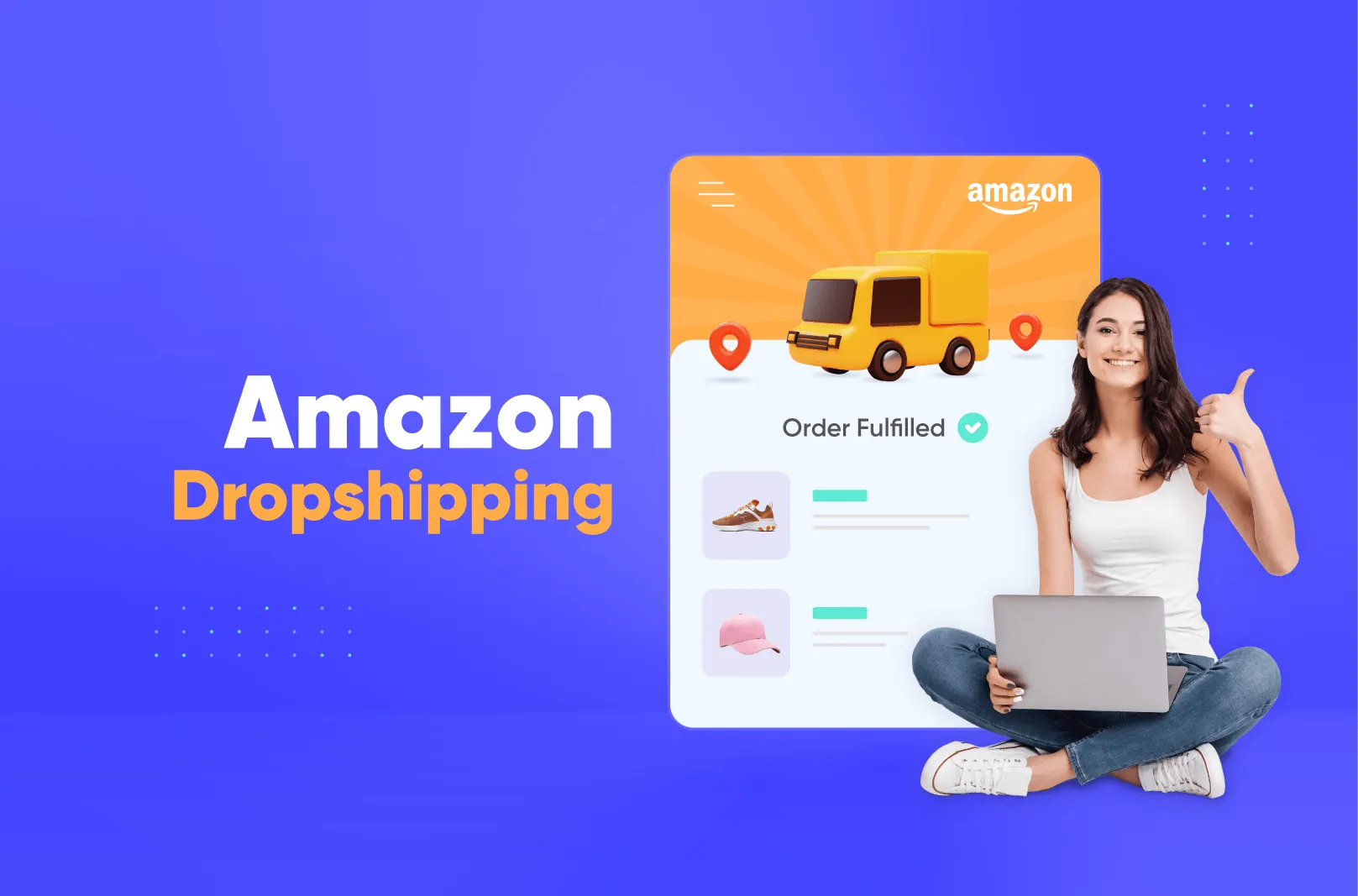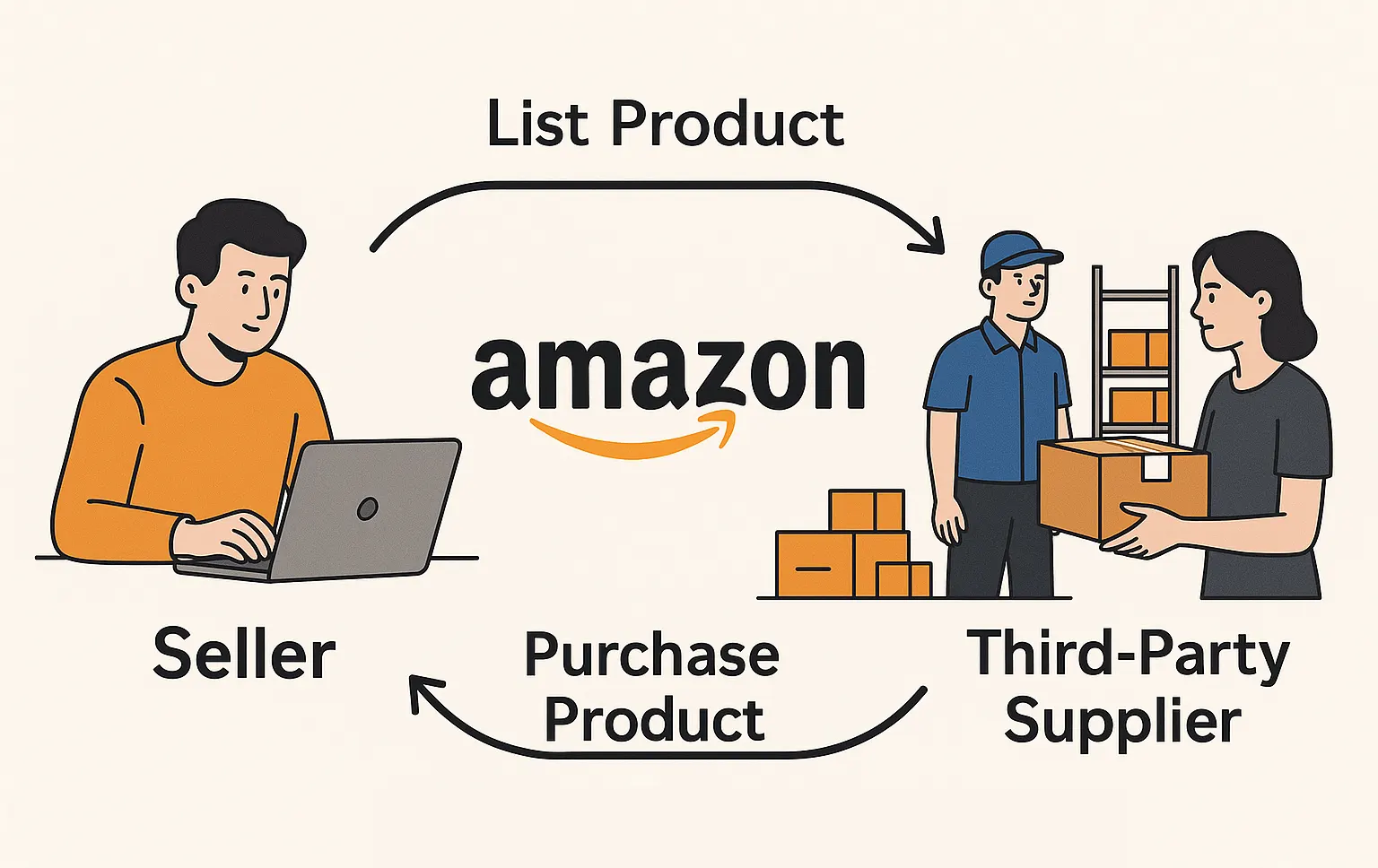Amazon Dropshipping Guide: How to Dropship on Amazon

Have you thought about dropshipping on Amazon? It makes good business sense.
Amazon brings in more than two billion visitors each month, showing its strong position in ecommerce. What really matters though is that shoppers trust Amazon, and this trust can help increase your sales.
Starting on Amazon might seem tough at first, but knowing what to do can change that. This guide will give you clear strategies for doing well in Amazon dropshipping and explain the tools you need.
What is Amazon dropshipping?
Amazon dropshipping is a way to sell where you list products on Amazon but don’t keep any stock yourself. Instead, when someone buys something from you, you buy it from a third-party supplier who ships it directly to the customer.
This method is great for people just starting out because it doesn’t require a big investment in inventory. To follow Amazon’s rules, you need to make sure that any items shipped come in packaging that shows you as the seller.
Getting started with Amazon dropshipping
Amazon dropshipping holds promise, both for newcomers and seasoned business owners. When you pursue it with your Shopify store acting as the control center, countless tools are available to assist in sourcing, pricing, fulfillment, and marketing. Use the tools and strategies to streamline your Amazon dropshipping journey—be sure to also check out some top automated dropshipping tools.

Choosing the Right Supplier
Success in Amazon dropshipping depends heavily on choosing reliable suppliers. A dependable supplier ensures timely delivery, quality products, and efficient customer service. Whether you’re using AliExpress, Oberlo, or a U.S.-based wholesaler, it’s vital to test order fulfillment speeds and product accuracy before listing anything on Amazon. Reviews and supplier ratings play a key role here. Establish clear communication with your suppliers and confirm they can handle Amazon’s strict delivery timelines—especially if you want to maintain a healthy seller rating.
Optimizing Your Listings for Visibility
Your product listings need to be more than just functional—they need to stand out. Amazon is a competitive marketplace, and SEO (Search Engine Optimization) within Amazon is critical. Use high-quality product images, compelling titles, and bullet-point descriptions that clearly explain the benefits of your item. Focus on keywords that buyers are likely to search. Tools like Helium 10 or Jungle Scout can help identify trending keywords and competitor gaps. Don’t forget to gather positive reviews as quickly as possible—they build trust and can significantly boost your rankings.
Handling Customer Service and Returns
Even though you’re not shipping the products yourself, Amazon expects sellers to provide top-tier customer service. Respond promptly to inquiries and offer clear, helpful responses. When returns happen—which they inevitably will—your supplier must be capable of processing them smoothly. However, since Amazon often favors customer satisfaction, be ready to issue refunds or replacements when needed, even if your supplier is at fault. Your seller metrics, including order defect rate and late shipment rate, will impact your visibility and eligibility for programs like Amazon Prime.
Scaling Your Amazon Dropshipping Business
Once you’ve mastered the basics, scaling your dropshipping business on Amazon means automating processes and expanding your product range. Consider using inventory management systems and pricing automation tools that adjust prices based on competitor activity or supply chain costs. Evaluate performance metrics regularly to identify your best-performing products and reinvest in similar niches. Also, as your revenue grows, consider registering for Amazon’s Brand Registry to unlock additional branding features and protections.